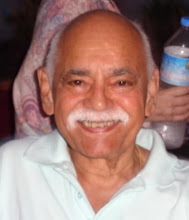Nudge, a book by Thaler and Sunstein was a hit when first published in 2008, despite some criticism from people
who described it as dull. Its theme is that people can be nudged into
making the right decision when attempts at persuasion, compulsion or other
forms of pressure might fail.
David Cameron was converted to this notion
and created a “NUDGE “ team of strategists charged with changing public
behaviour without them noticing.
Their latest finding is that legacy income
attracted by charities could double if people were reminded of making a
charitable bequest when drawing up a will. Most charities actually do so
anyway, and the reason legacy income has fallen may have more to do with
concerns about future income, drop in savings rates, fear about the cost of
long term care and the need to provide help to children and grandchildren onto
their first steps up the housing ladder.
Nudge is not a new concept. Edward De
Bono called his theory: Lateral thinking. Indeed its origins go much further
back. Kemal Ataturk, the founder of modern Turkey wanted his country to look
westwards. He believed that the covering up of women’s faces by the traditional
veil was wrong, so tried initially to ban its use. The clergy objected. Ataturk
then decreed that all women of ill repute would be compelled by law to cover up
their faces. Overnight respectable women abandoned the veil.
Back to charities. The ones that continue
to attract donations and legacies are the ones that have a high level of
spontaneous awareness, are known for the essential role they play and the
public’s belief that this charity makes a difference. Cancer research and the
British Heart foundation do well with legacy bequests because everyone knows
someone who has died from one of these dread diseases. They also have a large
base of supporters. According to the Target Group Index, Cancer research has 15
million supporters.
It follows that this generates a large
mailing list, so they have plenty of opportunities to ask donors to remember
them when it comes to making a will. Charities spend 65% of their advertising
budget on direct mail.
But what can the smaller, less well-known
charities do?
The answer is to get known, for the cause
and your contribution to alleviating the situation. Advertising investment by
charities in 2012 was nearly £ 400 million. Find some rich trustee to provide
the money. Raid your reserves. Hold events. Ask advertising experts to help.
Develop a clear objective that can be evaluated. If it is to raise money, ask
yourself if this is compatible with building positive awareness and creating a
larger donor base.
Two charities that attract legacies are The
RNLI and the Guide Dogs for the Blind. Research I have seen suggests that potential
donors are giving money for the brave life boat men rather than the hapless
sailors in trouble and for the beautiful dogs rather than the blind person. It
is important to understand what the emotional triggers are.
More than that, find someone to advise you. Someone who cares.
Contact me at: daz@bbvs.co.uk
(Your name will not be passed on to anyone)
More than that, find someone to advise you. Someone who cares.
Contact me at: daz@bbvs.co.uk
(Your name will not be passed on to anyone)

